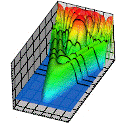Department of Physics and Astronomy: Publications and Other Research
Date of this Version
February 1982
Abstract
The advent of high-powered lasers and of dedicated synchrotron light sources and the needs of research in such areas as astrophysics and fusion have led to a resurgence of interest in atomic and molecular physics. Concurrently, there have been significant advances in atomic and molecular theory, not only in the ability to make more reliable numerical predictions but also in the detailed understanding of the dynamics of atomic and molecular collisions. The nonspecialist or beginning graduate student who must read the scientific journals to learn of these advances often finds that the requisite basic knowledge is extensive. Mitchel Weissbluth, whose book has just been published in a paperback edition, intended to meet the basic needs of such a graduate student. As stated in the Preface, the book is an outgrowth of a one-year course in atomic and molecular physics in the department of applied physics at Stanford University for students who came from such diverse fields as spectroscopy, magnetic resonance, Mössbauer resonance, quantum electronics, solid-state electronics, astrophysics and biological physics. The book aims, and largely succeeds, in providing a good grounding in atomic and molecular structure and spectra using the modern analytical tools of tensor algebra and group theory.


Comments
Published in Physics Today 35, No. 2, 79 (February 1982). Copyright (c) 1982 American Institute of Physics. Used by permission.